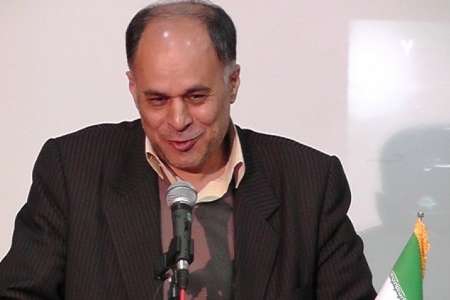 Zahedan, Sistan-o-Balouchestan Prov, June 27, IRNA � Minimum annual damage of country from narcotic drugs abuse is 100,000 billion rials (around $3bn), Ali-Owsat Hashemi, Sistan-o-Balouchestan province governor said here Thursday.
Zahedan, Sistan-o-Balouchestan Prov, June 27, IRNA � Minimum annual damage of country from narcotic drugs abuse is 100,000 billion rials (around $3bn), Ali-Owsat Hashemi, Sistan-o-Balouchestan province governor said here Thursday.The top provincial official made the comment in an interview with IRNA on the sidelines of a ceremony to annihilate five tons of narcotic drugs, adding that the damages of the narcotic drugs trafficking is not limited to the individual addicts that they target, as they aim at the foundations of family, social and value systems of the country.
The governor general criticized the international community for not paying its share of the campaign against narcotic drugs trafficking, but benefitting from it, arguing that the cost should be divided among the whole world nations. He meanwhile encouraged the government to pursue the matter in it proactive diplomacy.
�Furthermore, if the whole world�s will would be in favor of the campaign against narcotic drugs trafficking then uprooting the malicious phenomenon will not be a tough job, but is seems as if there is a will to increase the narcotic drugs plantation with the passage of each year and proof for that is such an increase in Afghanistan despite the NATO member states� presence there,� he said.
�Now that some countries have with their presence contributed to the expansion of this family-destroying substance, it is necessary to draw the attention of the international community to the matter that the western countries� presence in Afghanistan is a factor leading to the increased production of narcotic drugs,� said Hashemi.
He said that the narcotic drugs are the root cause for the birth of many types of insecurity, adding that in Sistan-o-Balouchestan province a group of anti-social elements are fed by narcotic drugs trafficking income.
He appreciated the provincial residents for their contributions to the campaign against narcotic drugs trafficking, which has decreased the damages of the malicious trade drastically in the province that is at the fore-front of the anti-narcotics campaign.
The governor general said that as a matter of fact the Anti-Narcotic Drugs Campaign Headquarters of the Country should be based in Sistan-o-Balouchestan province and the campaign should be regarded as a national priority.
Hashemi meanwhile appreciated the efforts made by the Iranian border guards, military and police forces in their cooperation against narcotic drugs trafficking.
During the event a number of families of the martyrs and disabled officers in campaign against narcotic drugs trafficking were praised and dully appreciated.
The five-ton annihilated narcotics during the event included opium, hashish, crack, heroin, and industrial drugs, which were set ablaze at the end of the ceremony.
Drug trafficking represents a major challenge for the Islamic Republic of Iran. The geographical location of the country, particularly its 1,923 km long porous eastern border with Afghanistan - the world?s largest illicit opium and cannabis producer - and Pakistan, has turned it into a major transit country for illicit drugs.
In response to these challenges, over the years the country has built one of the strongest counter-narcotics enforcement capabilities in the region and beyond. In 2011, Islamic Republic of Iran accounted for the highest rate of opium seizures (80%) in the world, as well as heroin seizures (30%), according to the UNODC World Drug Report 2013.
The Islamic Republic of Iran reportedly spends millions of dollars annually in border control, including for the construction of expensive barriers along its borders with Afghanistan and Pakistan. More than 3,700 national law enforcement officials have been killed in counter-narcotics operations over the last three decades.
In addition to opium and heroin trafficking, the Islamic Republic of Iran also faces new difficulties from emerging trends of illicit production and trafficking in Amphetamine Type Stimulants.
Over the last few years, there has been a sudden and massive increase of reported seizures of high purity crystalline methamphetamine (?Shisheh?). National authorities have also detected greater reliance on in-country production of Amphetamine Type Stimulants, mostly methamphetamines.
By IRNA
The Iran Project is not responsible for the content of quoted articles.











